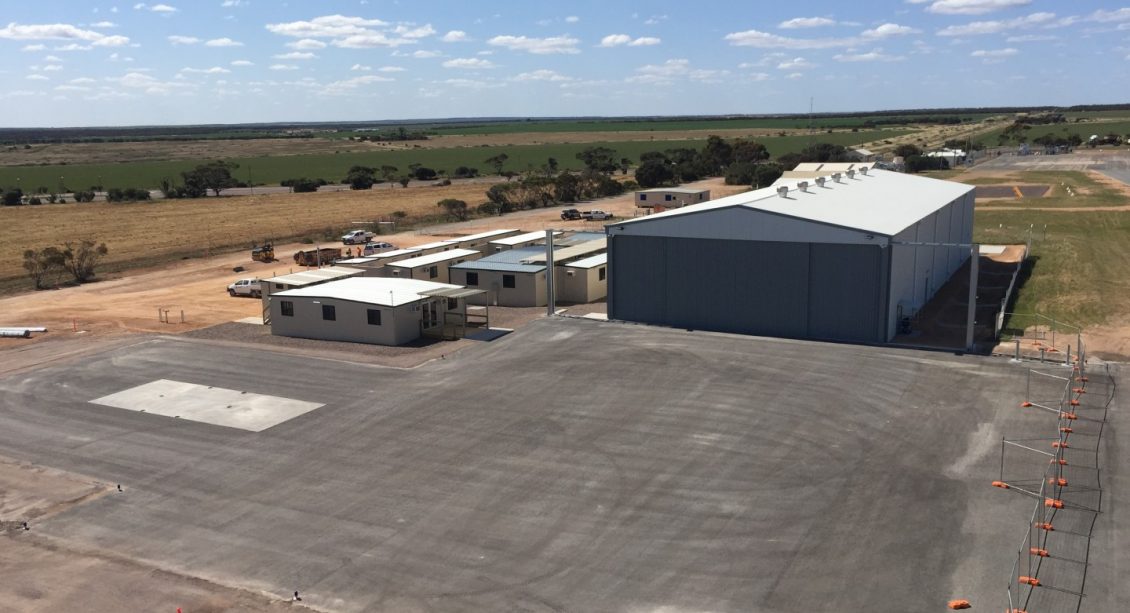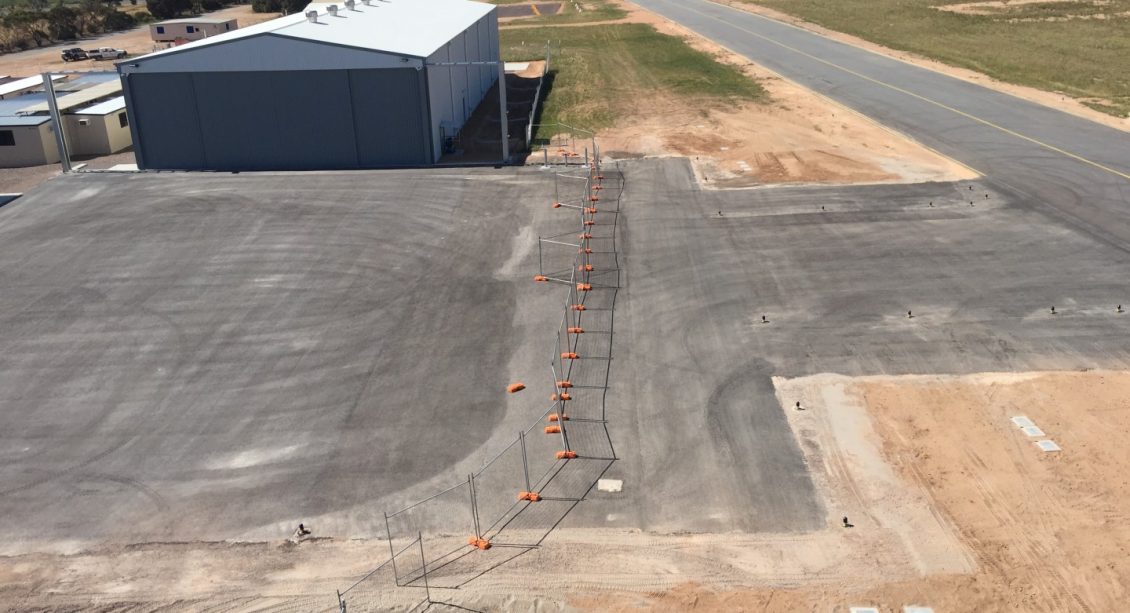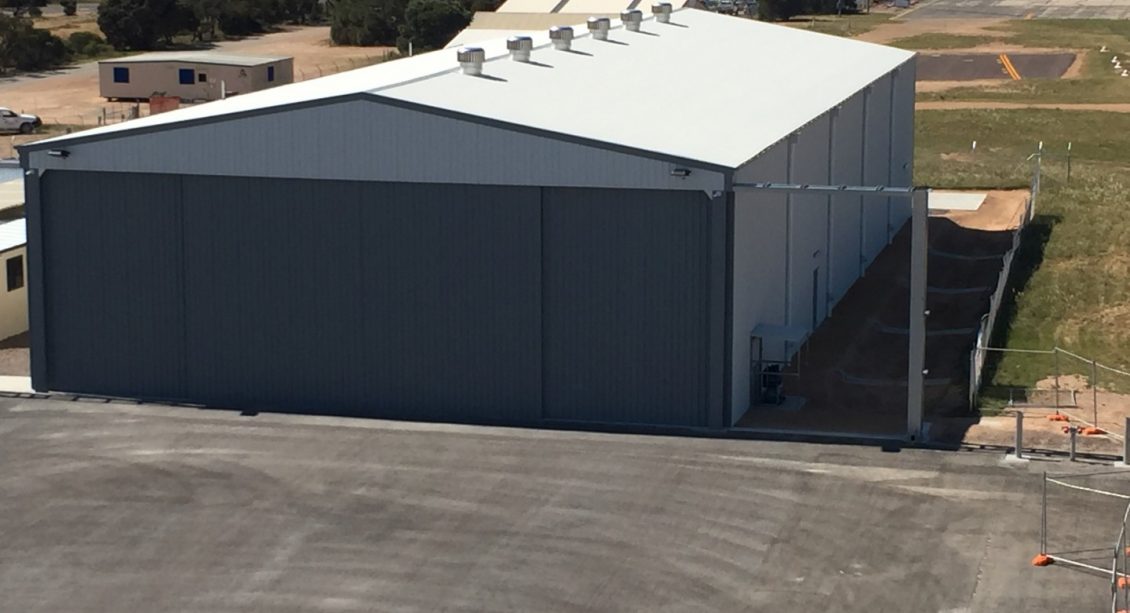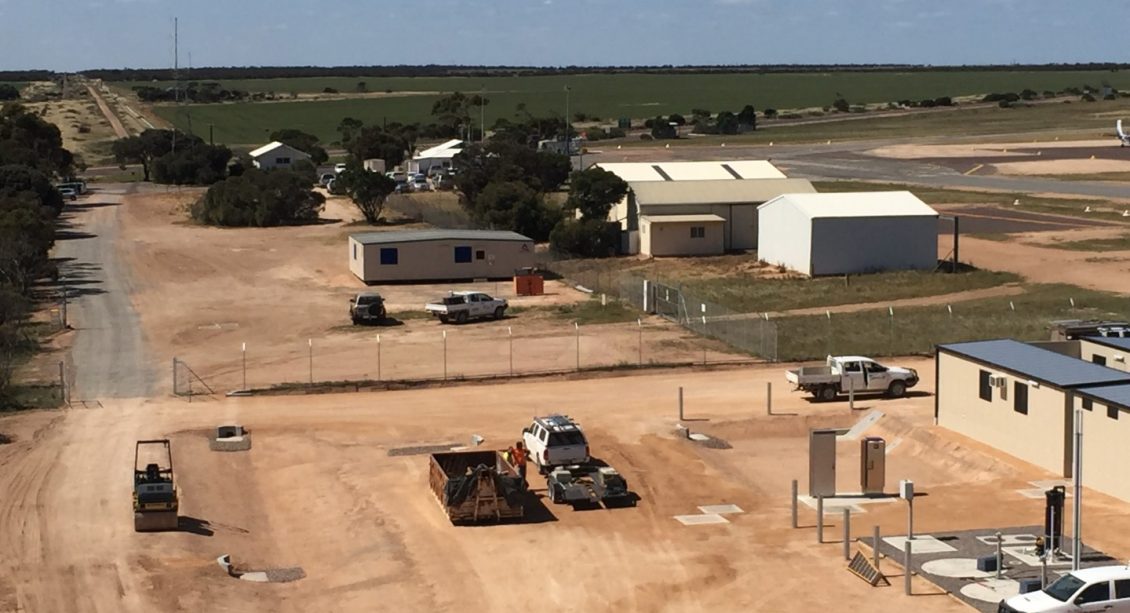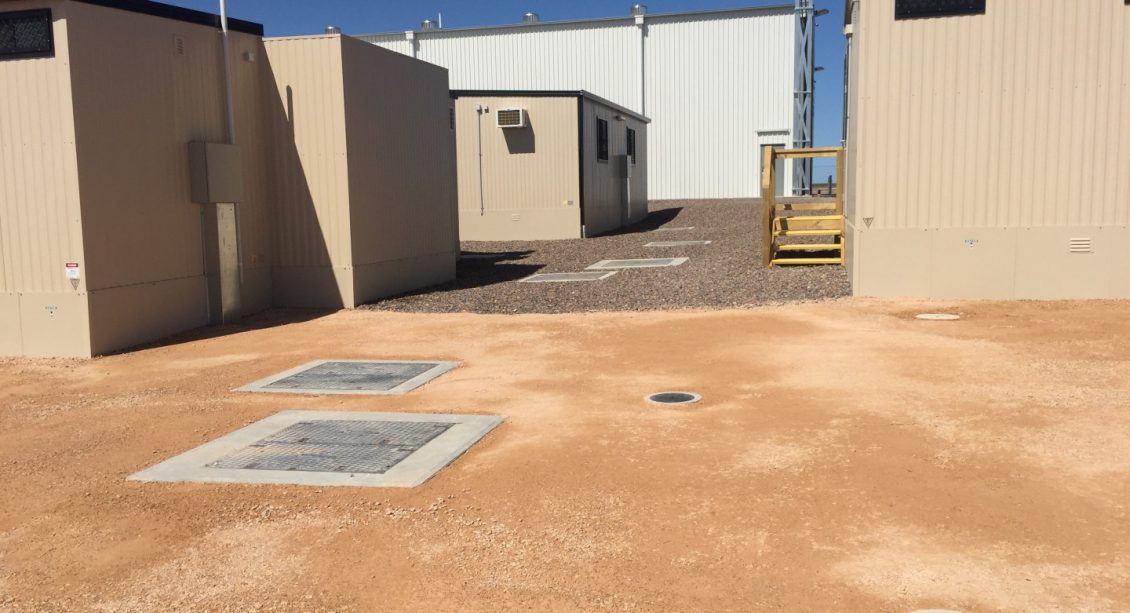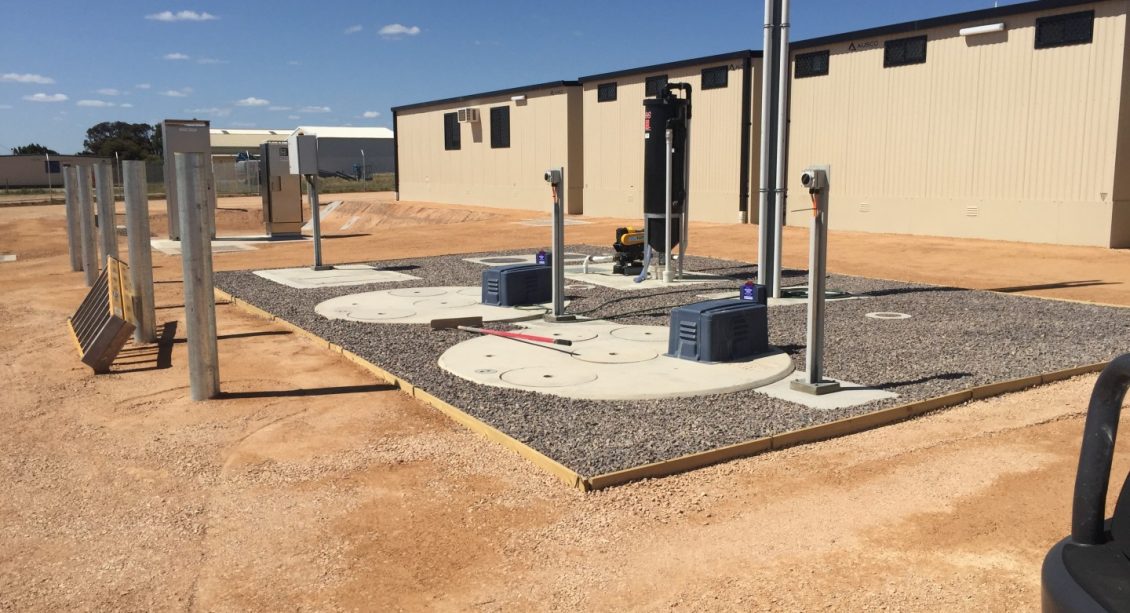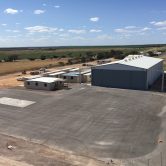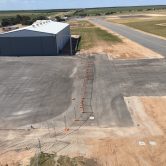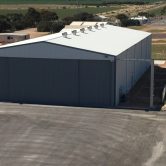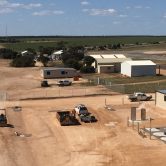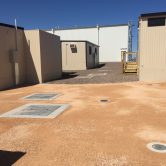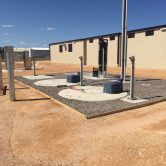Project Overview
McMahon Services were engaged by GHD on behalf of BP to construct a helicopter operating base at the existing Ceduna airport, as part of BP’s ‘Great Australian Bight Exploration’ project.
Upgrades to the airport were required following BP’s award of a rotary wing services contract to Bristow Helicopters Australia. Bristow engaged to transport rig workers from Ceduna to the rig some 300kms offshore to BP’s permit areas in the Great Australian Bight. The construction site was a leased area within the existing Ceduna Airport.
As Head Contractor, McMahon Services scope of works included the upgrade of an existing taxiway and air ground lighting, construction of new taxiway and apron, hangar workshop and parking, heliport terminal, installation of 12 modular office and workshop buildings, all services infrastructure and installation of security fencing.
The modular buildings supplied by Ausco included the heliport terminal, toilets, change rooms and disabled amenities, training rooms, flight planning and operations administration buildings. All modular buildings were built in Adelaide and transported to site and placed into position. Walkways and covered roofs were also included as part of the modular buildings.
McMahon Services supplied and erected the new hangar structure measuring 45 metres long, 20 metres wide and 7 metres high. The hangar included high bay lighting, industrial ceiling fans, compressed air, power, data and epoxy coated floor for safety and ease of maintenance.
Significant earthworks were completed on the project utilising a combined local workforce and local earthmoving contractors. Road base material totalling 8,000 tonne was transported from Streaky Bay in order to construct the building pads for the hangar, offices, heli apron, landing pad and taxiway.
Trenching and installation of over 1km of new services included fire water, sewer, trade waste, potable water, stormwater, electrical, data and communications Installation of stormwater swales, underground pipes and excavation of a basin catchment area was also completed in order to collect all building and land water run off to a single location.
Included in the scope was the construction of a night-time landing pad, upgrade of an existing taxiway and installation of new air ground lighting. All works were completed utilising McMahon Services in-house trades, as well as specialist local subcontractors.
The inclement weather provided challenges on the project, specifically when it came to the placement of the building pads. The building pad material was required to have a certain percentage of moisture, however wet weather during construction created a higher amount of moisture, preventing compaction of the layers for the building pads. Rather than wait for the material to dry out once the rain subsided, the project team modified the construction program and progressed with other elements of the project.
Local engagement was a major part of the successful delivery of this project.
- More than 100 workers were engaged throughout the process, with 50 on site at the peak of construction activity
- The project created employment opportunities for the local area, with 25 Ceduna-based workers engaged during the process across a variety of roles.
- Approximately 20 per cent of the local workers involved in the project were Indigenous and engaged in roles from administration to surveying and plumbing services.
Despite best intentions, BP has decided not to proceed with the exploration drilling program.

